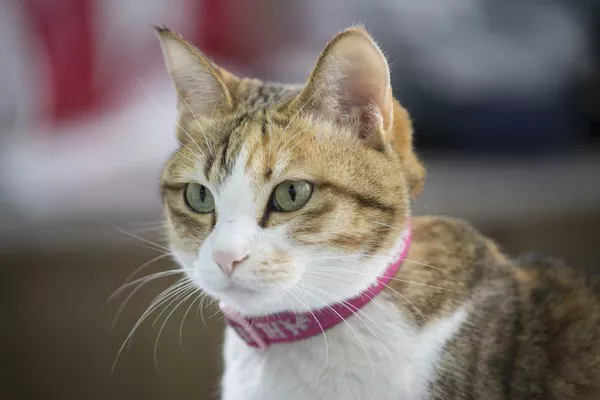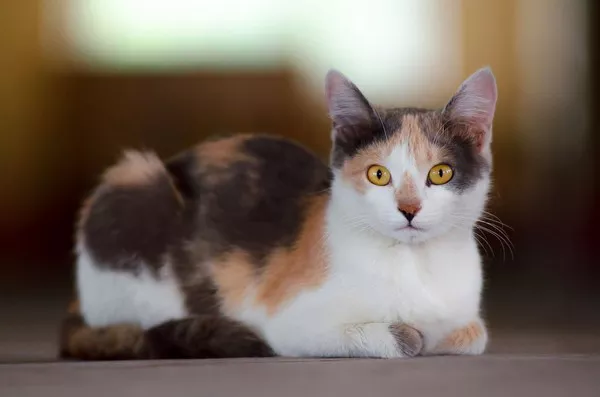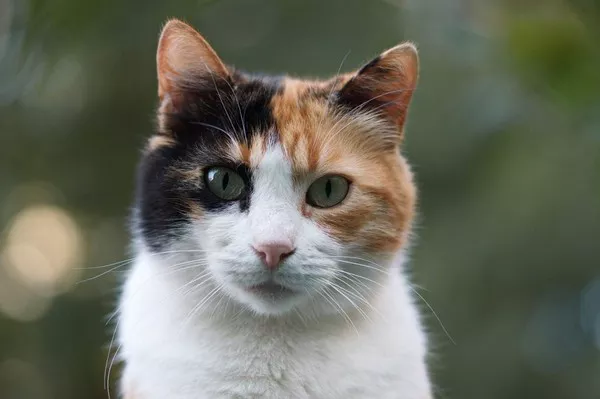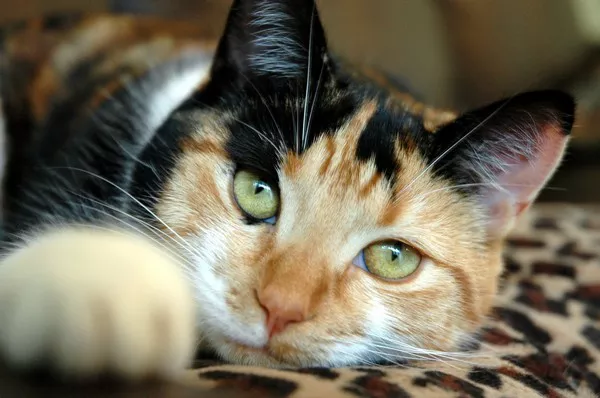Calico cats, with their distinctive tricolor coats, have long been a source of fascination and speculation. Among the various myths surrounding these enigmatic felines is the belief that their coat colors change with temperature fluctuations. The idea of a chameleon-like transformation based on environmental conditions adds an intriguing layer to the mystique of calico cats. In this article, we delve into the science behind calico cat coat colors, dispelling the myth that these captivating felines undergo color changes in response to temperature variations.
The Genetic Basis of Calico Coat Colors
Tricolor Marvel:
1. Genetic Determinants: The mesmerizing tricolor coat of calico cats is intricately linked to genetics. Specifically, the genes responsible for coat color are located on the X chromosome. Female cats have two X chromosomes (XX), while males have one X and one Y chromosome (XY).
2. X Chromosome Inactivation: In female cats, a fascinating phenomenon called X chromosome inactivation occurs. This process involves the random silencing of one X chromosome in each cell, leading to the expression of either the orange gene (O) or the black gene (o) in different regions of the coat. The combination of these genes results in the unique patchwork pattern characteristic of calico cats.
Coat Color Variations:
1. Orange, Black, and White: The combination of orange, black, and white fur creates the classic calico coloration. The specific distribution and intensity of these colors vary, resulting in a diverse array of patterns, from bold contrasts to subtle blends.
2. Dilute Calicos: Some calico cats exhibit a dilute version of the traditional colors, featuring softer shades of gray, cream, and lighter orange. This dilute variation adds to the visual richness of calico coat patterns.
Stability of Coat Colors:
1. Once Determined, Always Present: Importantly, once a calico cat’s coat colors are determined during embryonic development, they remain relatively stable throughout the cat’s life. The inherent genetic programming ensures that the orange, black, and white patches persist in their distinct and characteristic patterns.
2. Not Influenced by External Factors: The stability of calico coat colors is not influenced by external factors such as diet, grooming practices, or, as the myth suggests, changes in temperature. The coloration is an intrinsic aspect of the cat’s genetic makeup.
Dispelling the Myth of Temperature-Induced Coat Changes
Origins of the Myth:
1. Historical Beliefs: The notion that calico cats change color with temperature likely has historical roots, stemming from observations of color shifts in certain materials based on temperature changes. In some cases, people may have mistakenly extended this phenomenon to calico cats, attributing similar color-altering properties.
2. Limited Scientific Understanding: In eras when scientific understanding of genetics was limited, people often relied on anecdotal observations and explanations rooted in mysticism. The connection between calico cat coat colors and temperature became a part of folklore, perpetuating the myth across generations.
Scientific Explanation:
1. Genetic Determinism: The scientific understanding of calico coat colors unequivocally attributes their patterns to genetic determinism. Temperature fluctuations, whether minor or extreme, do not trigger alterations in the cat’s coat colors.
2. Cellular Processes: The expression of coat color genes occurs at the cellular level during embryonic development. Once established, the distribution of colors in the fur is fixed and not subject to external influences.
The Influence of Temperature on Cat Physiology
Normal Temperature Regulation:
1. Body Temperature Maintenance: Like all mammals, cats regulate their body temperature within a narrow range to ensure optimal physiological function. The normal body temperature of a cat typically ranges from 100.5 to 102.5 degrees Fahrenheit (38 to 39.2 degrees Celsius).
2. Thermoregulation Mechanisms: Cats employ various mechanisms to maintain their body temperature, including adjusting their metabolic rate, seeking shade or warmth, and modifying their behavior to conserve or dissipate heat.
Temporary Color Changes in Fur:
1. Fur Fluffing: Cats may exhibit temporary changes in the appearance of their fur based on temperature-related behaviors. When a cat is cold or feels threatened, it may fluff up its fur to create an insulating layer, making the coat appear thicker and potentially altering the perception of color intensity.
2. No Permanent Alterations: Importantly, any changes in the appearance of the fur due to temperature-related behaviors are temporary and reversible. They do not involve alterations in the actual color pigments within the fur.
Understanding the Perception of Coat Color Changes
Lighting Conditions:
1. Effects on Color Perception: The way we perceive colors in any object, including a cat’s fur, is influenced by lighting conditions. Natural sunlight, artificial lighting, and even the angle at which light interacts with the fur can create variations in the perceived color.
2. Natural and Artificial Light: Under natural sunlight, colors may appear more vibrant and true to their genetic expression. In contrast, artificial lighting may introduce subtle shifts in color perception.
Photographic Representation:
1. Challenges in Accurate Representation: Photographs of calico cats, especially those taken under artificial lighting or with specific camera settings, may not always accurately represent the true colors of the cat’s coat. The nuances of calico patterns can be challenging to capture faithfully.
2. Consideration of Variables: Factors such as the camera’s white balance, color temperature, and post-processing techniques can influence the way colors are portrayed in photographs. This variance can contribute to misconceptions about perceived changes in coat color.
Dispelling Common Misconceptions
Fur Fluffing vs. Permanent Color Changes:
1. Temporary Alterations: It is crucial to distinguish between temporary alterations in fur appearance, such as fur fluffing due to temperature-related behaviors, and permanent changes in coat color. The former is a physiological response to environmental conditions, while the latter is genetically determined.
2. Educating Cat Owners: Dispelling common misconceptions requires educating cat owners about the fundamental genetic basis of calico coat colors. Understanding the stable nature of these colors enhances appreciation for the inherent beauty of calico cats.
Photographic Representations:
1. Variances in Perception: When viewing photographs of calico cats, it is essential to recognize the potential variances in color perception due to factors such as lighting conditions, camera settings, and post-processing techniques.
2. Observation in Natural Light: To appreciate the true colors of a calico cat’s coat, observing the cat in natural light provides a more accurate representation. This firsthand experience allows for a better understanding of the stable and genetically determined nature of calico coat colors.
Conclusion
In conclusion, the myth that calico cats change color with temperature fluctuations is firmly debunked by the scientific understanding of feline genetics. The mesmerizing tricolor coat patterns of calico cats are intricately tied to specific genes, with the distribution of orange, black, and white fur determined during embryonic development. Once established, these coat colors remain stable throughout the cat’s life, unaffected by external factors such as temperature changes.
While cats may exhibit temporary alterations in fur appearance, such as fur fluffing in response to cold or threat, these changes are reversible and unrelated to permanent shifts in coat color. The enduring appeal of calico cats lies in their genetic diversity, unique coat patterns, and the captivating combination of colors that make each individual feline a work of art.
As cat enthusiasts, fostering a deeper understanding of the genetic basis of calico coat colors allows us to appreciate the inherent beauty of these feline companions without succumbing to persistent myths. By dispelling misconceptions, we contribute to a more accurate and informed appreciation of the charming and mysterious world of calico cats.



























